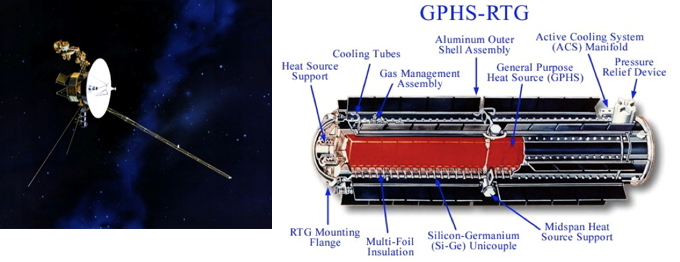Energy flows in society
The diagram shown below shows the
energy flow in US (https://flowcharts.llnl.gov).Nearly 60% of the total
energy is wasted to no avail, mostly as heat. Therefore, it is
extremely important to manage heat for energy efficiency.

What is thermoelectric conversion?
Thermoelectric (TE) materials have a
unique funtion of converting a temperature gradient to an electrical
potential grandient, allowing us to generate electricity from waste
heat. Thermoelectrics is expected to play an important role in meeting
the energy challenge of the future. The figure below shows the
principle of the electricity generation (the Seebeck effect).

When a temperature gradient is given,
carriers are condensed on the low temperature side resulting in a
gradient of the electrical potential. This phenomenon is called Seebeck
effect and could be utilized for generating electricity from a
temperature gradient. In contrast, electrical current given in a TE
material generates a temperature gradient. This is so-called the
Peltier effect and utilezed for small refrigerators and cooling
apparatus.
Demonstrates TE conversion
Seebeck effectPeltier
Future of TE technologies
The energy conversion by
thermoelectric materials has advantages such as no movng parts and no
requirements for maintenance. RTGs (Radioisotope thermoelectric
generators), which generates electricity from the decay heat,
have been used for the power generation in space or remote areas. For
example, Voyager 1 and 2 spacecrafts, which were launched in 1977, are journeying in interstellar space
as NASA announced in Septemper, 2013. They are still sending out their
signals to us, meaning that the power generation systems continue to
function. This proves the reliability of RTG tehcnhologies.

Thermoelectric devices are compact
and work quite. These aspects have lead to the applications of TE
devices to small cooling devices such as compact refrigerators and
forcal cooling devices.

The widespread use of thermoelectric
conversion technologies will definitely contribute to the energy
efficiency of society. For that, thermoelectric devices which generate
electricity from a large quantity of waste heat need to be widely
diffused. For example, power generators utilizing the waste heat from
vehicles or waste incinators are being developed. In the aspect of
researches on materials, we need to struggle to acquire materials which
are composed of abundant elements with low environmental load and show
high performance.
Efficiency of thermoelectric conversion
Thermoelectric conversion efficiency,
from heat to electricity, ζmax, is expressed as

 ,
(1)
,
(1)
where TH and TL are the tempearatures on the heated and cooled sides of the device, respectively, is
the average temprature (= (TH+TL)/2). Z is called the thermoelectric
figure of merit and is a function of S
(Seebeck coefficient), σ (electrical conductivity), and κ (thermal
conductivity).
is
the average temprature (= (TH+TL)/2). Z is called the thermoelectric
figure of merit and is a function of S
(Seebeck coefficient), σ (electrical conductivity), and κ (thermal
conductivity).
 (2)
(2)
Since ζmax increases monotonically with increasing Z, the increase in Z is required to enhance thermoelectric conversion efficiency. As shown in Eq. (2), Z depends on the physical quantities depending on materials. Therefore, the development of high performance (high Z) materials is desired. The quantity ZT is a nondimensional quantity and is called nondimensional thermoelectric figure of merit. ZT of 1 as a representative value from advanced materials at present gives ζmax of 0.11 in case that TH = 600 K, TL =300 K, resuling in the Carnot efficiency, (TH – TL)/TH, in Eq. (1) of 0.5. Thermal conductivity κ is composed of contributions from electrons κE and phonons κL, i.e. κ = κE + κL. According to the Wiedemann-Franz law, the electronic portion of thermal conductivity is proportional to electrical conductivity σ, i.e. κE = LσT, where L is Lorenz number. Using these relations, the nondimensional figure of merit can be deformed as
 .
(3)
.
(3)
The lorenz number for free electrons is 2.44×10-8 WΩK-2 and does not depend much on materials. Therefore, to enhance ZT, materials with electronic states giving an increased Seebeck coefficient and as small as possible κL/κE is desired. Researches on thermoelectric materials can be categorized broadly into increasing Seebeck coefficient, enhancing carrier mobility, and lowering lattice (phonon) thermal conductivity.
 ,
(1)
,
(1)where TH and TL are the tempearatures on the heated and cooled sides of the device, respectively,
 is
the average temprature (= (TH+TL)/2). Z is called the thermoelectric
figure of merit and is a function of S
(Seebeck coefficient), σ (electrical conductivity), and κ (thermal
conductivity).
is
the average temprature (= (TH+TL)/2). Z is called the thermoelectric
figure of merit and is a function of S
(Seebeck coefficient), σ (electrical conductivity), and κ (thermal
conductivity). (2)
(2)Since ζmax increases monotonically with increasing Z, the increase in Z is required to enhance thermoelectric conversion efficiency. As shown in Eq. (2), Z depends on the physical quantities depending on materials. Therefore, the development of high performance (high Z) materials is desired. The quantity ZT is a nondimensional quantity and is called nondimensional thermoelectric figure of merit. ZT of 1 as a representative value from advanced materials at present gives ζmax of 0.11 in case that TH = 600 K, TL =300 K, resuling in the Carnot efficiency, (TH – TL)/TH, in Eq. (1) of 0.5. Thermal conductivity κ is composed of contributions from electrons κE and phonons κL, i.e. κ = κE + κL. According to the Wiedemann-Franz law, the electronic portion of thermal conductivity is proportional to electrical conductivity σ, i.e. κE = LσT, where L is Lorenz number. Using these relations, the nondimensional figure of merit can be deformed as
 .
(3)
.
(3)The lorenz number for free electrons is 2.44×10-8 WΩK-2 and does not depend much on materials. Therefore, to enhance ZT, materials with electronic states giving an increased Seebeck coefficient and as small as possible κL/κE is desired. Researches on thermoelectric materials can be categorized broadly into increasing Seebeck coefficient, enhancing carrier mobility, and lowering lattice (phonon) thermal conductivity.
